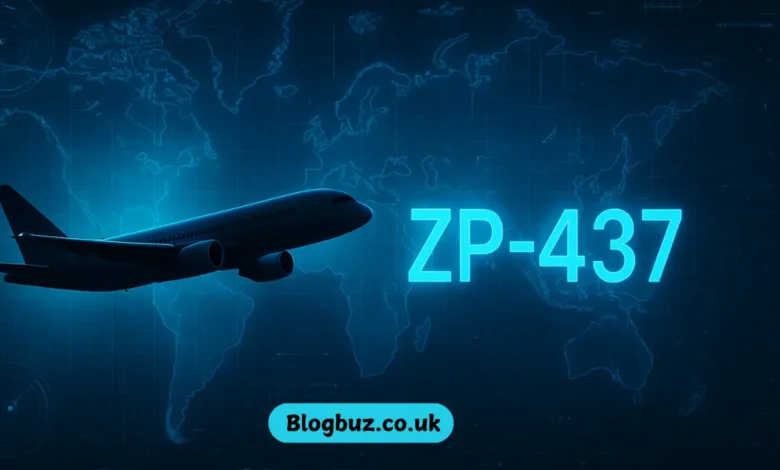Zopalno Number Flight: Fact, Fiction, or Future of Aviation?

In the world of aviation and flight tracking, new terminology can spark widespread curiosity—especially when it blends mystery, technology, and an aura of conspiracy. One such intriguing term that has recently surfaced across lesser-known blogs and online forums is the Zopalno Number Flight. From bold claims about futuristic flight tracking systems to mysterious disappearances of aircraft tagged with “ZP” codes, the Zopalno number flight narrative has captured the imagination of internet users. But what is the truth behind this cryptic phrase? Is it an absolute aviation standard, a misunderstood piece of history, or a cleverly packaged fiction? This article explores the various aspects surrounding the Zopalno number flight phenomenon, examining its alleged origin, the claimed technology behind it, the myths and mysteries surrounding it, and its real-world credibility.
The Alleged Origin of Zopalno Number Flight
The Zopalno number flight reportedly originates from a supposed aviation innovation developed in the early 2010s. Some articles credit a fictional aerospace engineer named “Dr. Anna Zopalno” for creating a sophisticated identification and tracking system intended to replace traditional flight numbers. According to these sources, the Zopalno system was designed to incorporate more data into a flight’s identifier—combining real-time location, flight duration, environmental impact, aircraft model, and even passenger load into a single code.
However, no verifiable records of Dr. Anna Zopalno or her affiliation with any accredited institution or aviation body exist. There are no patents, no academic papers, and no mentions of the system in regulatory bodies such as the Federal Aviation Administration (FAA) or the International Civil Aviation Organisation (ICAO). This strongly suggests the story is more myth than reality.
The Flight Code Format: What Is a Zopalno Number?
The most distinctive feature of the Zopalno number flight system is its supposed unique alphanumeric format, often starting with “ZP” (e.g., ZP‑437). The narrative suggests that these numbers were part of a proprietary system designed to provide granular information about the flight in real time—far beyond what current IATA or ICAO codes offer.
Some sources claim that the Zopalno system included these elements in its identifier:
- ZP = Zopalno Prefix
- First Digit = Aircraft model category
- Second Digit = Real-time weather risk factor
- Third Digit = Emission score
- Trailing characters = Flight path cryptograph
However, such a detailed breakdown has not been validated by any aviation or cybersecurity authority. Instead, these descriptions read more like speculative fiction than technical documentation.
The Disappearance of Flight ZP-437: A Mystery?
One of the most popular myths surrounding the Zopalno number flight concept is the mysterious disappearance of a Mediterranean flight, labelled ZP-437, in the late 1970s. According to blog-style sites like The Home Trotters and Magazine Ustad, this flight vanished over the Ionian Sea under unexplained circumstances. Some claim this incident prompted the secretive termination of the Zopalno program by European air authorities, supposedly to avoid public panic.
The story is dramatic but lacks credibility. No such flight disappearance is recorded in official aviation archives. Major aircraft incidents from the 1970s have been well-documented by global media and aviation investigators; no incident involving ZP-437 or a Zopalno-related flight has ever been reported.
The story of ZP-437 may be a modern internet-age fabrication crafted to add intrigue and depth to an otherwise fictional concept.
Claimed Technological Advantages of Zopalno Number Flight
Despite lacking evidence, various articles ascribe revolutionary technological benefits to the Zopalno number flight system. According to these claims, Zopalno codes could:
- Reduce flight delays by 35% using predictive algorithms.
- Optimize passenger boarding and baggage handling.
- Integrate seamlessly with AI for real-time rerouting and emergency responsiveness.
- Minimize carbon footprint by allowing aircraft to select eco-optimized flight paths.
- Provide automated alerts to air traffic control systems for sudden deviations in flight paths.
While these sound promising, they are not unique to the fictional Zopalno system. Modern aviation already incorporates similar advancements through:
- ADS‑B (Automatic Dependent Surveillance-Broadcast)
- Real-time GPS tracking
- AI-enhanced weather forecasting
- IATA and ICAO environmental compliance models
None of these are tied to Zopalno in any way.
Zopalno Number Flight in Popular Culture and Media
Interestingly, the Zopalno number flight concept has begun to surface in online storytelling, sci-fi Reddit threads, and speculative fiction. Some authors have even used it as the central premise for fictional works involving aviation conspiracies, time-travelling planes, or Cold War secrets hidden within flight data.
Due to its ambiguous status, the term has gained traction as a symbol for lost knowledge, aviation secrecy, or futuristic travel systems. Think of it as the aviation equivalent of the “Philadelphia Experiment” or “MH370” reimagined through a techno-mythical lens.
Dissecting the Legitimacy: Is Zopalno Number Flight Real?
Based on existing evidence—or lack thereof—Zopalno number flight is not a real or recognized aviation system. It does not exist in any known flight tracking, registration, or identification databases. Here are several reasons supporting this conclusion:
- No official record: No mentions from IATA, ICAO, FAA, EASA, or national aviation registries.
- No academic trace: No scientific publications, journals, or whitepapers referencing Zopalno systems.
- No implementation data: Airlines use standardised codes and systems, such as ADS-B, ACARS, and Mode S transponders, none of which refer to Zopalno numbers.
- Myth-like origin: Stories of vanishing flights and suppressed tech systems bear the hallmarks of fictional narrative, not historical fact.
The Zopalno Number Flight as a Digital Urban Legend
In many ways, Zopalno number flight is shaping up to be a digital-age urban legend—a piece of speculative aviation lore similar to myths like ghost ships or secret lunar bases. Like all successful myths, it blends a kernel of plausibility (flight tracking, technological innovation) with a heavy dose of mystery and unverifiable claims.
This doesn’t mean it’s entirely without value. As a fictional concept, it might inspire creative media, video game plots, or even legitimate innovation conversations around more innovative flight identification systems.
Conclusion: Zopalno Number Flight—Imagination or Innovation?
The tale of the Zopalno number flight is a compelling one. It combines the allure of technological breakthroughs with the intrigue of lost or hidden aviation knowledge. Yet, when examined under the microscope of fact-checking and documentation, the story falls apart.
There is no credible evidence that Zopalno number flights ever existed, nor that they represent a suppressed or emerging aviation technology. Instead, the concept appears to be a well-crafted myth—perhaps part of a viral storytelling campaign or fictional content repackaged as real innovation.
You May Also Read: 1-888-541-8306 Qatar Airways Support: Real Help for Flights, Refunds & Travel Emergencies




